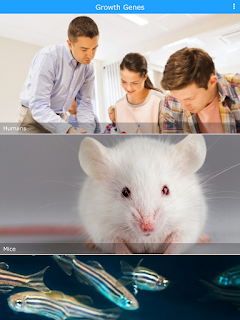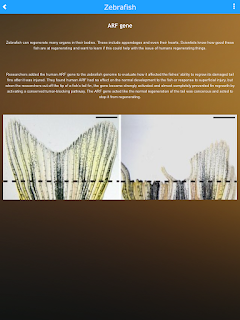Personalizing the Learning of Bio Students through Genius Hour
Genius Hour - Mrs. Frost Honors Biology 9th Grade
This year, our Garnet Valley High School teachers in the Science Department launched Genius Hour in their biology classrooms. This initiative entailed giving every student the opportunity to research a particular topic of their own interest, in any biology-related field of science. Once their topic was selected, students developed essential questions to help drive their research. The students used their research to develop a more formal driving question to steer the experiment process. Read below to learn more about our students' experiments and their scientific findings.
Thomas Burke, (Freshman at GVHS), researched the Iodine levels in swimmers vs. non-swimmers. In speaking with Thomas he provided the reasons behind his research. He himself is a swimmer. Through research he has learned that chlorine in pool water replaces the iodine in the body. He conducted surveys and experiments with fellow classmates. His experiment group of students included swimmers and non-swimmers, all ninth grade students and all males. He used a tool, called a Vita Stiq which is used to test vitamins and minerals in the body. The tool is used on the outside of the skin at different acupuncture points on the body where vitamin and mineral levels can be measured. Iodine is measured above the collarbone. Through his testing and research he found that the best place to test for iodine levels in on the neck because iodine is found in the thyroid.
His results were the following: Results: There is no direct correlation with being a swimmer and having low iodine levels, However, it was found that the majority of test subjects had an iodine deficiency.
Abby Clemens, (student at GVHS)
Researched 3-D Printing - She began her research with the following questions: How does the programming work? Specifically the Makerbot software. How does the process work? She chose to print the organs of a bull frog. Abby ultimately understood the process of 3D printing, how it is used and how it can be used in Biology. Abby Used Tinkercad to design the parts of frog. She learned the process of Tinkercad and Makerbot
Evan Fenster and Vikas Rana (students at GVHS) - Studied the process of 3-D printing, how it works and the programs used with 3-D printers. They planned to print a visual representation of photosynthesis. Although they were able to determine the software to use, they realized they were not able to print exactly what they had hoped. They problem-solved and realized their initial design wouldn't work so they had to come up with a new plan. The new plan was to use a simple cube shape and to print the object upside down so that there was not a difficulty with printing an overhang. They used the Microsoft program, 3D Builder to successfully print. See the printing video below.
John Carr and Clay Bromley - studied Neuroscience focusing on Psychology Research on fields of Neuroscience, Parts of Brain, Neurotranmissions, and Psychology. Their driving question was: How do power dynamics work in group settings? John and Clay set up test groups and provided a design challenge for groups to complete. Members of the group were chosen, One group had no leader at all, Another group was told individually that each member was to act in the role of a leader and a third group had one leader of the group. Once the experiment was conducted, all members are given a survey. John and Clay hypothesized that the groups that had one leader in the group would be the most successful. They performed three full run throughs of their experiment with a total of 36 total participants and nine groups.
The Results of their study is as follows: Most efficient was the group that had no leader at all. If there is no leader assigned if someone is a leader they assume the role of leader. There were mixed results with their hypothesis.
With natural leader assigned and power is not evenly distributed.
Every situation with all leaders there was no success.
No leaders group they did well half of the time. If someone in that group stood up to be a leader they wouldn’t work well but were successful.
Click here to view a video of their project
Click here to view a video of their project
Matt Flicker (student at GVHS) Researched gene regrowth and if they can possibly be used on humans. He wanted to find out how one can speed up cell regrowth. He analyzed several studies that included mice and humans and another study that included zebrafish and humans. He then developed his conclusions based on his research and built an app using Appypie. Below are screenshots he created from he research he performed.
Max Foster (student at GVHS) researched the effects of whales on human activities
Click Here to read his essay on Overfishing
Click Here to view his
poster essay
Below are pictures of student projects showcased at
STEAM Night, 2017 at GVSD














Comments
Post a Comment